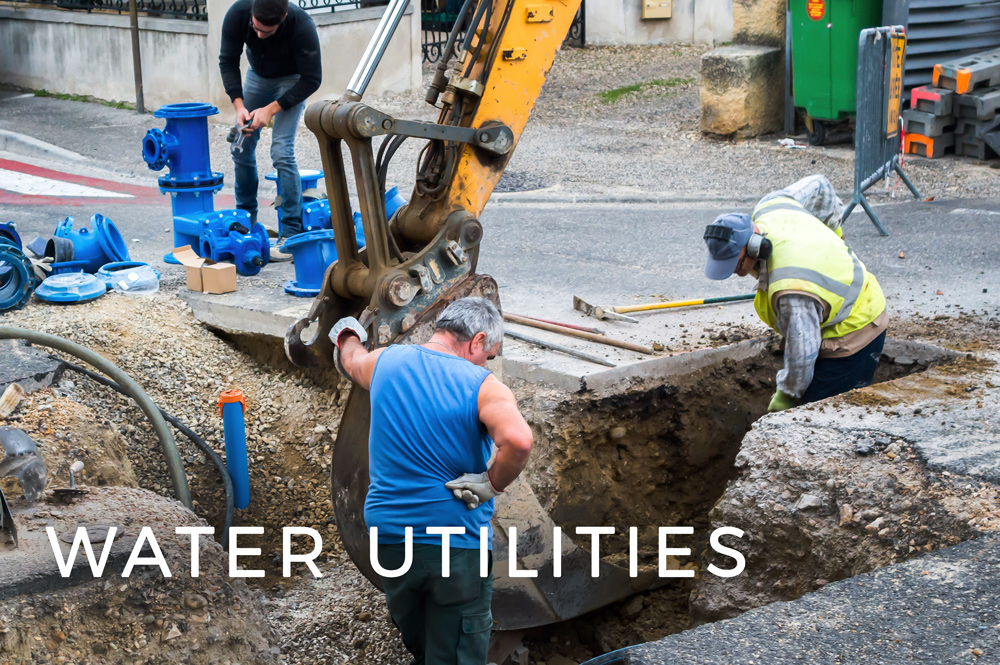
Online GIS is of great value in terms of planning, managing, and maintenance of utility infrastructures such as water resources and services. Efficient and smart use of high-quality spatial data becomes imperative in a competitive economy for many electrical, gas and water utilities. Locating facilities, tracking jobs, planning operations in utilities relies on having all of the data accessible online and open for collaboration between managers, field crews, local governments, and citizens.
We bring you an example of using cloud-based GIS by a water utility services company in Croatia, Liburnijske vode (Liburnian Waters), responsible for water network maintenance in 4 local government districts in the region of Istria. For even more insight and an elaborated case study, read our in depth article about this case.
Liburnijske vode are using GIS Cloud for collaboration with local government units, together with data collection, field inspections, and an infrastructure overview, maintenance and planning. We talked with Siniša Čulić, GIS officer in the Water Supply and Drainage department.
GIS Cloud enables collaboration between our company and local government units. Our management now has an overview of existing water infrastructure and drainage data on their smartphones while in the field. Moreover, our employees are using forms to enter information about sanitary network cleanups, field inspections and water supply shortages. All data can be monitored from any location – with GIS Cloud Map Viewer, those who are in need of an accurate information now have a way to access it quickly and efficiently.
What were the challenges?
Liburnijske vode needed to comply with government regulations that required having a backup for all of their data. They needed a solution for a secure backup of their spatial data that could be updated easily and quickly.
The other challenge was to facilitate their collaboration with external stakeholders such as local governments and citizens. At the same time, their idea was to improve communication and collaboration in the company while reducing the paperwork involved in field inspections. Extensive paperwork and paper maps often involved outdated information, slow data collection processes and slow information flow between their employees.
Transferring geospatial data to the cloud
Liburnijske vode had a priority to comply with regulations and store their data to a secure location. Having this in mind, the logical choice was to transfer their data to a cloud-based system that could be updated regularly.
In words of Siniša Čulić:
GIS Cloud was a logical solution for a number of reasons, the most important being a price model, user support and the ease of use.
They were already using ArcGIS desktop solution and this meant that the existing data needed to be transferred to the cloud. It was easily transferred with the Publisher for ArcMap. This was a first step toward having a reliable backup system accessible from anywhere.
The second step was to work with the data using Map Editor, providing different GIS tools such as polygon, line and points editing, and attaching additional data with information about their facilities.

Improving the field data collection process
After they have made sure that everything was in compliance with regulation, Liburnijske vode started working on improving their internal processes and collaboration. They used Mobile Data Collection for fast and accurate field data collection, providing customized data entry forms that helped in reducing paperwork. More importantly, the application was easy to use and didn’t require any specialized training for their field crew. Also, it greatly improved their coordination and communication. The new field data collection process improved productivity and reduced the time it takes to collect the data (Field inspection and maintenance, adding new sanitary network, facilities, drainage and water shortages data).
GIS Cloud enabled our employees to add different types of data such as sanitary network cleanups, inspections and water shortages directly from the field.
All of this data was now available to the office crews and management enabling them to plan their operations and prioritize tasks with more efficiency than ever. It also helped them to collaborate with local government units giving them access to different segments of spatial data.
Map Viewer allowed an easy access to spatial data using smartphones and tablets, what was especially useful to management that was now able to monitor the situation any time regardless of the location or device.
Encouraged by the excellent results achieved with GIS Cloud, Liburnijske vode are planning to continue improving their business processes by including field workers in the process of ensuring infrastructure data accuracy.
To sum it up, Siniša Čulić listed the main reasons for using GIS Cloud for water utilities:
- Intuitive platform for collaboration with people within an organization, as well as with stakeholders from local government and citizens
- Reasonable cloud service pricing in comparison to alternatives
- Easy-to-use and doesn’t require additional training or IT resources.
Interested in GIS solutions for utilities? Contact us or sign up for a free trial.
You can visit their public portal here:








